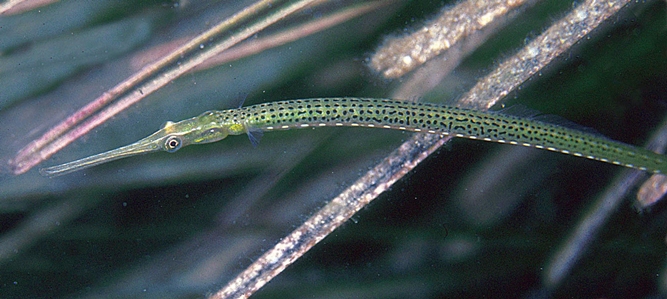General Description
Body and snout very long, slender; tail almost prehensile; tail fin absent. Usually greenish-brown, but variable in colour, often with evenly scattered dark or pale spots. Closely resembles the Widebody Pipefish Stigmatopora nigra, differing in colouration, the placement of the dorsal fin, and female body shape. To 25 cm.
Biology
This is a very common species in seagrass areas of Port Phillip and Western Port, Victoria. Individuals are extremely well-camouflaged amongst Zostera seagrass.
Habitat
Shallow seagrass and macroalgal beds in sheltered bays and estuaries, in depths of 0-10 m.
Reefs
Seagrass meadows
Distribution guide
Southern Australia.
Species Group
Fishes › Seahorses, pipefish and allies
Depth
Water Column
Max Size
25 cm
Commercial Species
No
Global Dispersal
Native to Australia
Identify
Conservation Status
- DSE Advisory List : Not listed
- EPBC Act 1999 : Not listed
- IUCN Red List : Not listed
- Fisheries Act 1995 : Protected Aquatic Biota






